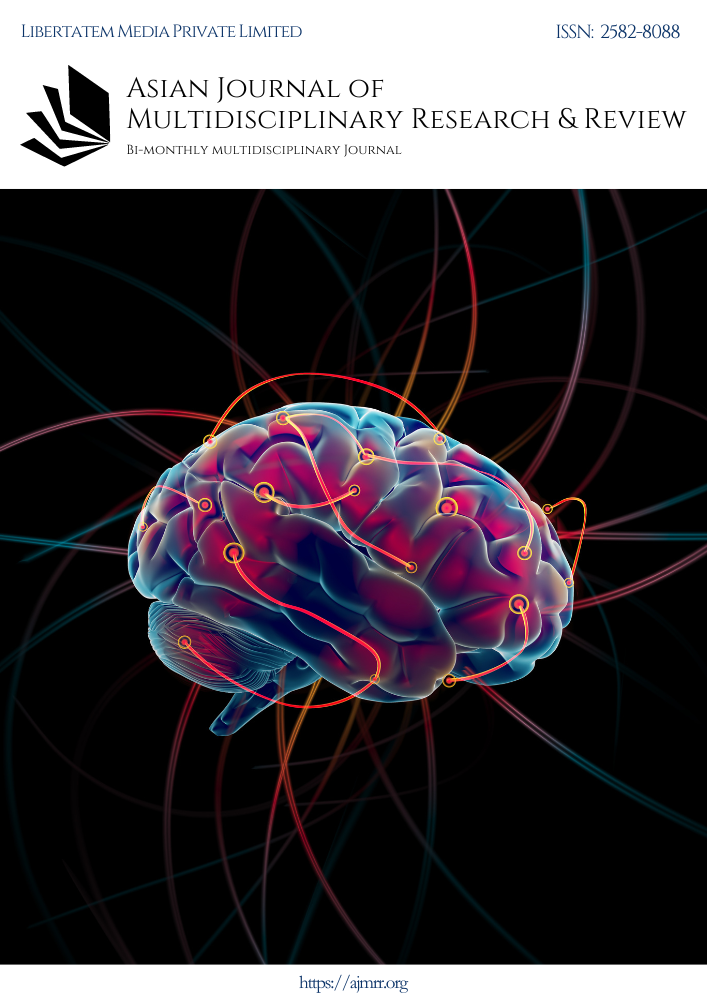PERSISTING EDUCATIONAL INEQUALITIES IN THE EDUCATION SYSTEM OF NAGALAND
Keywords:
Modern Education, InequalityAbstract
The growth of modern education in Nagaland has been featured with an increase in the number of schools and enrollment alongside a healthy literacy rate. Such growth has catered to the growing educational needs in the state and thus, viewed with optimism. However, among the consequences of modern education in a tribal society, since the colonial period, an evident inequality was one of them. This inequality has aggravated with the turns of socio-political changes. It has taken various forms in the present day Nagaland marked with urbanized sections existing in parallel with ‘backward’ and underdeveloped areas, depicting a wide disparity. Such disparity is exacerbated by the existence of poor performing government run schools and a high number of better performing private schools. The presence of a poor performing government sector and a growing private sector in a highly disparate society, such as Nagaland, affects the affordability factor in education. Meanwhile, the location of the schools also determine the accessibility of the various sections of population with regard to education. This paper, therefore, analyses the High School Leaving Certificate (HSLC) examination performance and related data from the Nagaland Board of School Education (NBSE) to present the existing educational inequalities and explore other educational gaps within the education system in Nagaland. It also delves into the aspect of accessibility of education for both the Government run and Private schools throughout Nagaland.
Downloads
Downloads
Published
Issue
Section
License

This work is licensed under a Creative Commons Attribution-NonCommercial-ShareAlike 4.0 International License.
License Terms
Ownership and Licensing:
Authors of research papers submitted to the Asian Journal of Multidisciplinary Research & Review (AJMRR) retain the copyright of their work while granting the journal certain rights. Authors maintain ownership of the copyright and grant the journal a right of first publication. Simultaneously, authors agree to license their research papers under the Creative Commons Attribution-ShareAlike 4.0 International (CC BY-SA 4.0) License.
License Permissions:
Under the CC BY-SA 4.0 License, others are permitted to share and adapt the work, even for commercial purposes, as long as proper attribution is given to the authors and acknowledgment is made of the initial publication in the Asian Journal of Multidisciplinary Research & Review. This license allows for the broad dissemination and utilization of research papers.
Additional Distribution Arrangements:
Authors are free to enter into separate contractual arrangements for the non-exclusive distribution of the journal's published version of the work (e.g., posting it to institutional repositories or publishing it in books), provided they acknowledge the initial publication of the work in the Asian Journal of Multidisciplinary Research & Review.
Online Posting:
Authors are encouraged to share their work online (e.g., in institutional repositories or on personal websites) both prior to and during the submission process to the journal. This practice can lead to productive exchanges and greater citation of published work.
Responsibility and Liability:
Authors are responsible for ensuring that their research papers do not infringe upon the copyright, privacy, or other rights of any third party. The Asian Journal of Multidisciplinary Research & Review disclaims any liability or responsibility for any copyright infringement or violation of third-party rights in the research papers.



